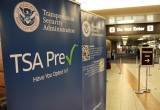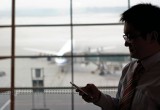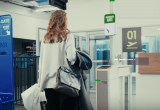Dubai travel authentication plan to enable boarding checks from Tesla autos
17 November, 2017
category: Biometrics, Contactless, Transit
Mobile passports and biometric travel checks—along with a car that helps travelers skip lines and go straight to boarding areas—stand as key features of a Dubai travel authentication initiative designed to ease airport hassles. The effort eventually could enable fliers to walk onto planes with only smartphones instead of passports and boarding passes.
Dubai travel authorities are working with U.S.-based carmaker Tesla on a project that provides home-to-boarding service based around the company’s electronic vehicles
For now, the travel authentication programs are meant to apply to citizens of countries that are part of the Gulf Cooperation Council—Saudi Arabia, Kuwait, Qatar, Bahrain, Oman and the United Arab Emirates—according to local reports. First up is what local authorities call a “smart gate.” An eligible passenger must download for free from Google or Apple the Smart UAW Wallet App that was released in May. The app holds passport and other travel details for the passenger, who scans the phone’s bar code at the smart gate, and then scans fingerprints to gain access.
“The passenger will scan his/her fingerprint and the entire process is finished in under 15 seconds,” Amer Rashed Almheiri, the UAE’s general directorate of residency and foreign affairs, recently told local reporters. “Once they’ve cleared the immigration check, they can go straight to the boarding gates.” He said that all the airport security system and the data it holds—including the passenger’s name, seat number and flight number—are linked to the smart wallet.
Dubai travel authentication via a car ride
Dubai plans to take the smart gate concept to a new and more luxurious level, too—at least for first- and business-class travelers. Dubai travel authentication authorities are working with U.S.-based carmaker Tesla on a project that provides home-to-boarding service based around the company’s electronic vehicles. Here’s how it would work:
- The passenger gets into the Tesla car waiting outside his home.
- A camera inside the car uses facial recognition to confirm the passenger’s identity.
- The passenger inside the car scans passport, immigration and boarding pass information, with the data sent to the proper counter or gate inside the airport.
- All of that connects to a smart gate inside the airport, paving the way for the passenger to easily reach his boarding area.
- As for luggage, the car’s trunk has equipment that weights and scans the passenger’s bags, which are offloaded and taken to the plane as the passenger walks toward his flight boarding. The scanning technology would also check for prohibited materials.
“All information are captured, including passport details and the boarding pass will be sent to the counter,” Almheiri said. “The traveler will not have to go through immigration and can go straight to the lounge and the boarding gate.”
He also described a future “smart tunnel” in which facial and iris recognition technology would, within a few seconds, authenticate travelers without requiring them to go through more cumbersome immigration controls.




